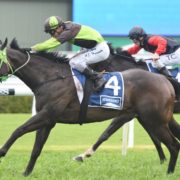SEGMENTING THE GAMING FLOOR BY PLAYER AND GAME TYPE
Hold and Spin games now make up over 28% of all games in NSW Clubs or more in many clubs, so there is less game variety for the players. Both hold and spin games, and games with dynamic paytables (where the players bet up and the jackpots increase), are skewed to players who can afford higher average bets. This leaves regular medium and small players running through their gaming dollars much quicker. These players (generally the lower two tiers in most clubs) still account for around 50% of the gaming turnover just because of their greater numbers. In many clubs these groups are where we are seeing a significant decline.
These players often come in several times each week and spend in all areas of the club including gaming, but when their enjoyment levels drop because they lose money too quickly, they come less often, negatively impacting all revenue streams.
The fix
Diversifying the gaming floor with a variety of game types helps to give these players more choice of games with volatilities that are more favourable to their prolonged play time. Every club needs a good number of the most popular hold and spin games for bigger players to enjoy, but in our game choices, and our tiered membership programs, clubs have focused on one group of players and risked a considerable proportion of the play from lower tiers. Buying a variety of games to suit all players is necessary.
Once you have the game variety available you can then start segmenting your gaming floor based on player types using the game volatility to guide in machine placement.
Segmenting – Low and medium volatility games
“Granny games” should be towards the front of the room. These players are playing for time and like to look around to see who’s coming into the club or the gaming room. They are happy to have a chat and will sit where they can catch the eye of other members they know. They are there for social reasons and are happy to play and chat for long periods.
The benefit for the club is that these games are often lower RTP and will balance out the higher RTP% product such as the Hold and Spin and dynamic paytable games and will assist in maintaining bottom line profits. With lower RTP% they are also good candidates for a small fast-hitting in-house link that will see lots of little wins that drop directly to the win meter and are played back through the machines as extra turnover.
Performance should be compared to other games in this market group as a secondary game ranking. They will not compete at “top game” levels but certainly provide for a gaming player that we often ignore and will frequently provide equivalent net profit results.
Segmenting – Medium to high volatility games
These bigger players games can fill the centre of the gaming floor. High SAP and Linked Jackpots are often found on these games and they should be as visible as possible to anyone entering the gaming room. On these types of Links the large jackpot still needs to be visible so they should be positioned where people can see the jackpots after entering the gaming room. This is where the dynamic paytable and hold and spin games would fit well.
Segmenting – MTGM, and high/mid denom games
MTGMs, and high denom and mid denom games should still be grouped together in private spaces at the back of the room. We have always segmented this area of the gaming floor but in most cases the higher denomination games are being replaced by multidenomination games. The games that are left need to be in a perfect spot for these remaining players and can include some multigame product where a good mix of games provide the high/mid denomination choices.
These players hate to be overlooked so high traffic corridors are not ideal for these games. In some clubs, play on MTGMs can be busy and loud so ensuring the high/mid denom players are not disturbed by the noise is an important consideration.
Segmentation and Gaming Floor Design
Creating pockets of machine banks on your gaming floor assists with flexibility to shrink and grow different areas for different types of players as the game preferences and trends change. Shorter banks give a club the ability to position machines effectively and expand where required. These shorter banks also add privacy for the player, particularly where end bank screens are used.
Machines in the centre of the room tend to be more private than machines placed along walls particularly in high traffic corridors. Curved banks lead players through spaces in a more deliberate way.
Creating the pockets of space that are needed to enhance the gaming floor for players is easier when you have good space but segmenting the floor by product type can add interesting areas to any sized gaming floor.
For more gaming articles access the IGT Gaming Academy “Hero Products” here >>>> https://thedrop.com.au/igt-gaming-academy/nsw-clubs/











